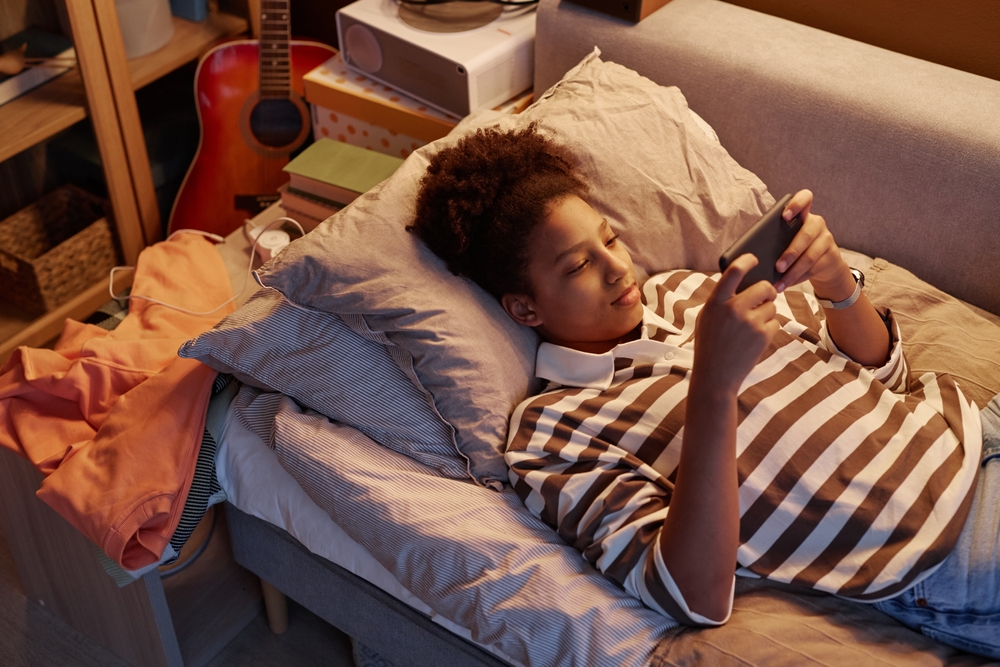The average teenager now spends approximately nine hours daily consuming digital media, with social platforms accounting for about one third of that time. This unprecedented level of connectivity arrives during a developmental period when the adolescent brain undergoes critical remodeling, particularly in regions responsible for social cognition, identity formation, and impulse control.
As parents and educators navigate this relatively new terrain, a more nuanced understanding of social media’s impact on teenage development has begun to emerge from longitudinal studies tracking digital natives from early adolescence into young adulthood.
How algorithms capture vulnerable teenage brains
The adolescent brain contains a heightened sensitivity to social rewards. This biological reality, which historically motivated teenagers to develop crucial face to face relationship skills, now intersects with platforms specifically engineered to deliver intermittent social reinforcement.
The dopamine connection
Neuroimaging studies reveal that receiving notifications, likes, and positive comments activates the same reward pathways triggered by food, social connection, and other evolutionarily beneficial activities. For teenagers, whose reward systems already operate at heightened sensitivity, this activation can be particularly intense.
Platform algorithms learn precisely what content generates continued engagement for each user. Research demonstrates these systems can identify psychological vulnerabilities within 20 to 300 interactions, tailoring content feeds to maximize time on platform rather than psychological wellbeing.
The teenage brain remains particularly vulnerable to this algorithmic targeting because prefrontal cortex development, which supports impulse control and future oriented thinking, continues into the mid twenties. This creates a neurological mismatch where reward systems function at adult levels while regulatory systems remain underdeveloped.
Social comparison and identity distortion
During adolescence, identity formation occurs partially through social comparison. Teenagers naturally evaluate themselves against peers to understand their relative standing and adjust accordingly.
Highlight reels versus reality
Social media transforms this developmental process by exposing teenagers to highly curated representations of peers and influencers. Studies tracking mood changes before and after social media use find that passive scrolling through appearance focused content produces immediate decreases in body satisfaction and overall mood, particularly among teenage girls.
Research from the University of Pennsylvania found that limiting social media use to 30 minutes daily led to significant reductions in loneliness and depression compared to control groups who maintained typical usage patterns averaging 2 hours daily.
The appearance pressure effect
The impact appears particularly pronounced regarding physical appearance. Studies examining the relationship between social media use and body image concerns consistently find stronger correlations among teenage girls, though recent research indicates boys experience increasing pressure as well, particularly regarding muscularity and athletic performance.
Surveys of adolescent mental health professionals report 89% of their teenage patients express anxiety about their physical appearance in relation to social media, with 75% specifically mentioning filters and photo editing as contributing factors.
Disrupted sleep and academic performance
Perhaps the most concrete impact involves sleep disruption. The teenage brain requires approximately nine hours of sleep for optimal functioning, yet average sleep duration has declined significantly since widespread smartphone adoption.
The blue light factor
Exposure to blue light from screens suppresses melatonin production, delaying natural sleep onset. Additionally, notifications and the psychological activation of social interactions close to bedtime further complicate the transition to sleep.
National Sleep Foundation research indicates teenagers who use social media within 30 minutes of bedtime get an average of 45 minutes less sleep than those who disconnect earlier in the evening. This sleep disruption correlates with decreased academic performance, with studies finding that each hour of lost sleep associates with a drop of approximately 0.07 GPA points.
Benefits of connection and identity exploration
Despite these concerns, research also identifies important benefits when teenagers use social media moderately and intentionally.
Support for marginalized youth
For adolescents navigating minority identities, particularly LGBTQ+ teenagers in unsupportive environments, online communities often provide crucial social support unavailable locally. Studies examining psychological wellbeing among LGBTQ+ adolescents find that connections formed through online communities correlate with reduced depression symptoms and higher self reported life satisfaction.
Creative expression and skill development
Content creation itself offers significant developmental benefits. Teenagers who actively create rather than passively consume social media content demonstrate greater improvements in creative thinking, technical skills, and even entrepreneurial mindsets.
Research tracking content creators ages 13 to 17 found they scored higher on measures of agency, initiative, and problem solving compared to age matched peers who used social media primarily for consumption.
Finding a healthier relationship with platforms
As with many aspects of adolescent development, the impact of social media appears highly dependent on patterns of use, parental modeling, and individual vulnerability factors.
Usage patterns matter more than total time
The quality of engagement appears more significant than quantity. Active participation, particularly with real life friends and family, correlates with more positive outcomes than passive scrolling through influencer content or engaging with strangers.
Research from Common Sense Media finds that teenagers who primarily use social media to deepen existing relationships report higher life satisfaction than those using it predominantly to follow celebrities or seek validation from strangers.
Parental modeling proves crucial
Studies examining family dynamics consistently show that parental media habits strongly predict adolescent patterns. When parents demonstrate healthy boundaries with technology, teenagers more readily adopt similar habits.
Household media agreements prove most effective when developed collaboratively rather than imposed. Research indicates that teenagers who participate in creating family technology guidelines show 47% higher compliance than those operating under unilateral parental rules.
As researchers continue studying this unprecedented experiment in adolescent development, the emerging consensus suggests neither alarmism nor dismissal serves teenagers well. Rather, understanding the specific mechanisms through which social media influences developing brains allows for targeted interventions that maximize benefits while minimizing potential harms.
The most promising approaches focus not on restricting access entirely but on developing the executive function skills necessary to use these powerful tools intentionally. For the teenage brain still developing its capacity for self regulation, learning to navigate digital environments mindfully may represent a crucial developmental task of modern adolescence.














